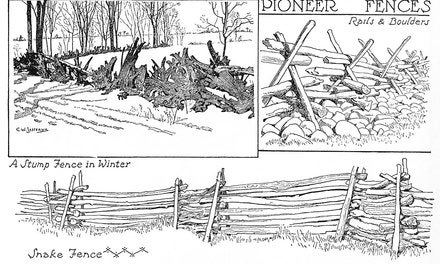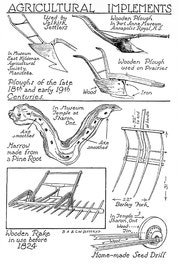Shingle Making
Library and Archives Canada, Acc. No. 1972-26-673
Remarks
C.W. Jefferys' notes about this picture from The Picture Gallery of Canadian History Volume 2
Shingles were usually made of cedar. Blocks of the required width (about five inches), and generally about eighteen inches long, were cut from the log, and placed upright in the fork of the Frow Horse. The workman, seated on the Horse, set the blade of the Frow across the top of the block, and struck the projecting end with a Club or Maul. As the Frow penetrated the block, he wiggled the handle, which was set loosely in its socket, until the "shake," as the untrimmed shingle was called, flew off. This proceeding was repeated until the whole block was split into slabs of uniform thickness. The shake was then placed in the clamp of a Shaving Horse, as shown in the drawing, and tapered by the Draw Knife toward one side of the shingle and to the end nearest the workman, to allow for overlapping. The surface of these hand-made shingles followed the grain of the wood, which shed more easily rain and melting snow, prevented the moisture entering the fibres of the wood and thus made- them last longer.
Published References
- Jefferys, Charles W. 1945 The Picture Gallery of Canadian History Volume 2, p.224




Comments